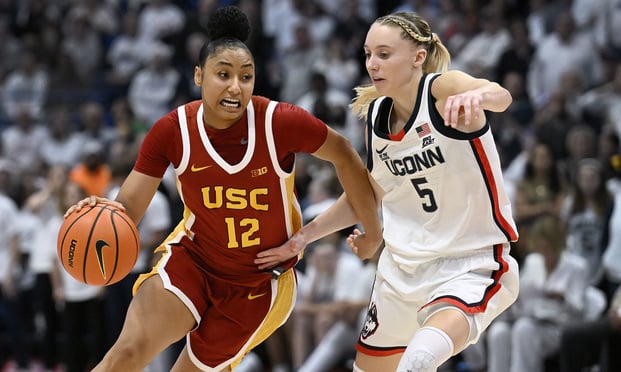New Top Cats Emerge In Allied Medical
 With all the big cats getting away from the allied medical professional liability arena, the mice are not just playing, they are taking over the house.
With all the big cats getting away from the allied medical professional liability arena, the mice are not just playing, they are taking over the house.
The departure of The St. Paul Companies, MIIX, Reliance, Frontier and a number of other major carriers, from not only the traditional medical malpractice market but the allied medical professional liability market as well, has increased the number of opportunities for smaller and regional carriers.
“They have been doing it all along, but with admitted carriers exiting, medical surplus [lines] carriers are stepping up to the plate,” commented Richard Jordan, vice president in charge of the Medical Professional Liability Division of Market Finders, a managing general agency in Louisville, Ky.
Market Finders has been in business for approximately 30 years, and the Medical Professional Liability Division is nearly 13 years old. Lately, Mr. Jordan has seen a spike in lab, Certified Registered Nurse Anesthetist (CRNA), and physical therapist submissions.
Despite the recent growth in these three allied lines, Mr. Jordan remains highly aware of the unique risks associated with each.
According to Mr. Jordan, “the typical cause of loss for a lab is failure to diagnose or loss of specimen.” Typical claims for CRNAs “would be death or some type of neurological deficit from the administration of the anesthesia, and physical therapists would be some type of physical damage from the manipulation.”
Regarding tough-to-place classes of allied health care professional liability insurance, Mr. Jordan confidently says, “we have not necessarily found any classes that are uninsurable. We have seen uninsurable risks, but not necessarily classes.”
The exits of The St. Paul and other major players from the allied medical professional market has been a boon to players who specialize in niche markets, according to Letha Heaton, vice president of sales and marketing for Shand Morahan in Deerfield, Ill.
Ms. Heaton said she has seen niche lines of allied medical business lead to other business opportunities. She points to increases in non-prescription health care and non-FDA health care coverage opportunities, such as alcohol rehabilitation clinics, holistic medicine facilities and health spas, as allied lead-ins to more traditional lines of business.
Nevertheless, her most dramatic growth and expansion of allied health care business has been in nursing home coverage, an area which Ms. Heaton says remains competitive even after the large players called it quits.
She maintains that nursing home coverage is a profitable line when approached correctly, and that means “underwriting to their own specs, writing on claims-made forms, and not being responsible for previous claims.” In other words, starting each case afresh.
The risks associated with nursing home coverage, acknowledges Ms. Heaton, include the fact that many nursing homes are ill-capitalized. She also said that government regulations are dramatically increasing as a result of the widespread recognition that, very often, an inexperienced, underpaid staff will be on the front lines of care for high risk medical patients, like the elderly and terminally ill.
Managing general agencies are also enjoying increased attention as they become the focal point for hard-to-find allied health professional liability policies and specialized products.
Bernard G. Heinze, executive director of the American Association of Managing General Agents in King of Prussia, Pa., said: “Following the hardening of the market and the move by some of the carriers in the admitted market to discontinue or reduce their underwriting of certain health care lines in order to return to core business, AAMGA members have seen a dramatic increase in the number of submissions and proposals for cover.”
“We have seen retail agents and other producers tapping into the specialization of MGA's who, by virtue of their experience, are affording creative programs and business solutions to address proper protection for these risk exposures,” Mr. Heinze continued.
Jim Roe, president of Arlington/Roe and Co., an MGA in Indianapolis, agrees with Mr. Heinzes characterization that MGAs add value through specialization.
The removal of the large players from his region has allowed his firm to create a separate unit to concentrate solely on medical malpractice coverage, he said. Mr. Roe said that this new unit enables Arlington/Roe to “actively market specialized products in the Midwest”, something the larger players have trouble doing on their own.
Despite the opportunities being created by the big carriers departure from some allied health care professional liability markets, even the regional firms benefiting from this power vacuum are carefully avoiding business too far away from their comfort zones.
Eric R. Anderson, vice president of marketing and communications for the Washington, D.C. based-NCRIC Group Inc., confirms that “the withdrawal of St. Pauls obviously opens up some significant opportunities for allied medical professional liability insurance carriers looking to expand market share.”
Nevertheless, Anderson says that NCRIC, which was established in 1980 as a physician-governed medical professional liability insurance carrier, will continue to view its allied health business as an extension of its core medical malpractice coverage for physicians.
NCRIC, therefore, chooses to write medical professional liability coverage for allied health care professionals such as nurse midwives, surgical assistants and certified nurse anesthetists, but is not rushing to write hospitals, clinics or nursing homes.
According to Mr. Anderson, “These risks do not fit within our core competencies.”
This risk-averse scenario might be proof that the regional and niche-oriented “mice” have not entirely decided to take over the house in the cats absence after all. They might just be getting more comfortable in their respective rooms.
Reproduced from National Underwriter Property & Casualty/Risk & Benefits Management Edition, September 9, 2002. Copyright 2002 by The National Underwriter Company in the serial publication. All rights reserved.Copyright in this article as an independent work may be held by the author.
Want to continue reading?
Become a Free PropertyCasualty360 Digital Reader
Your access to unlimited PropertyCasualty360 content isn’t changing.
Once you are an ALM digital member, you’ll receive:
- Breaking insurance news and analysis, on-site and via our newsletters and custom alerts
- Weekly Insurance Speak podcast featuring exclusive interviews with industry leaders
- Educational webcasts, white papers, and ebooks from industry thought leaders
- Critical converage of the employee benefits and financial advisory markets on our other ALM sites, BenefitsPRO and ThinkAdvisor
Already have an account? Sign In Now
© 2024 ALM Global, LLC, All Rights Reserved. Request academic re-use from www.copyright.com. All other uses, submit a request to [email protected]. For more information visit Asset & Logo Licensing.








